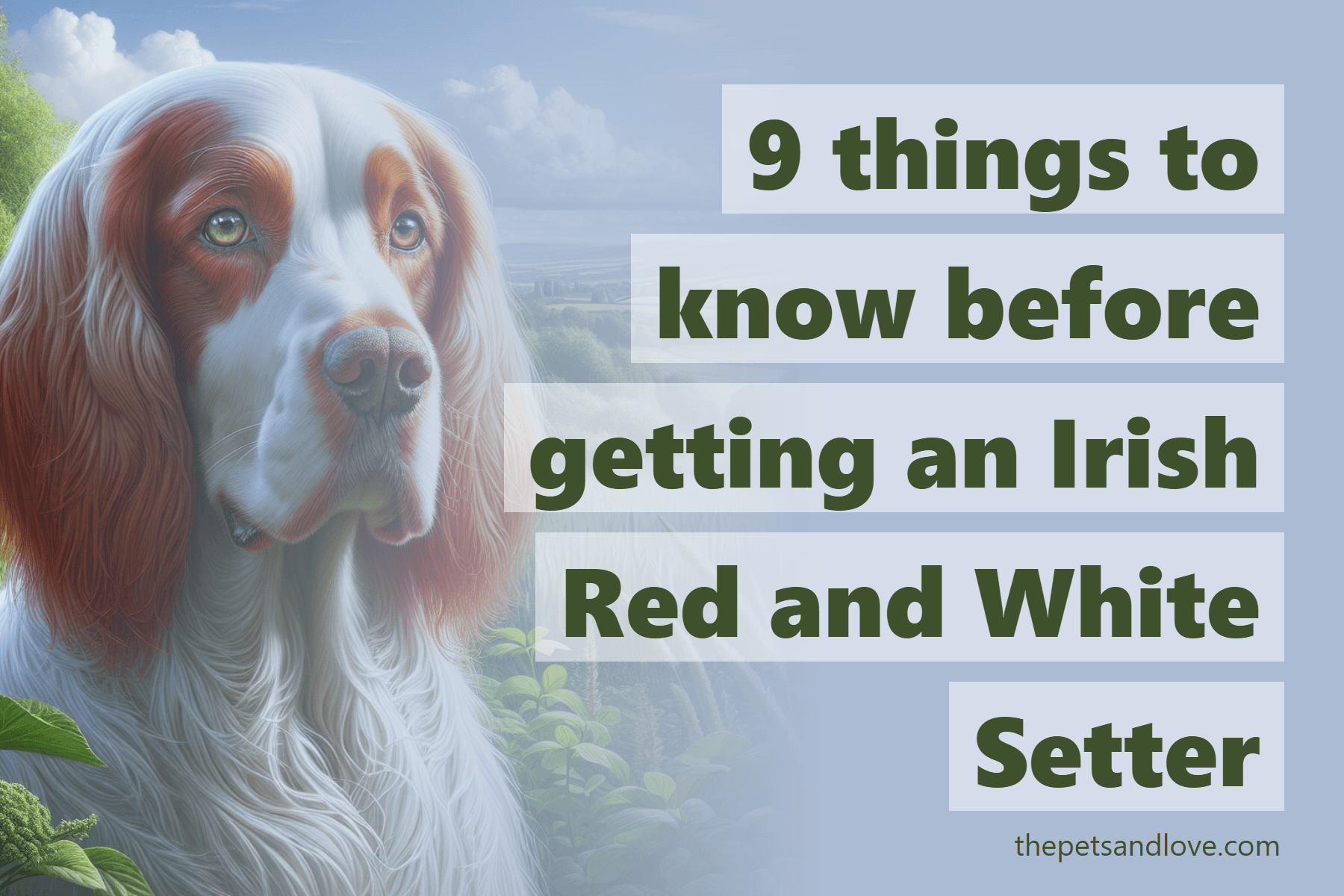9 things to know before getting an Irish Red and White Setter

The Irish Red and White Setter: A Friendly, Energetic Throwback
If you've seen an Irish Setter before, chances are it was the all-red version — sleek, shiny, and full of energy. But did you know the red-and-white variety is actually the original? Yep, the Irish Red and White Setter (often shortened to IRWS) is where the breed started before solid red coats became the trend. And while they might not be as common today, these dogs are every bit as lovable, loyal, and lively.
Here’s what I’ve learned from being around sporting breeds like these — and why the IRWS might be the under-the-radar gem you’re looking for.
They’re the Original Irish Setter
Before red became fashionable, Irish Setters came in both red and red-and-white. But as tastes changed, breeders focused on the solid red coat, and the red-and-white variety nearly disappeared. Thankfully, a few dedicated breeders kept them going, mainly as working dogs. Over time, the two types developed slight differences, and today they’re recognized as separate breeds — even though they’re still very similar in temperament and shape.
They’re Built a Bit Differently
While both types of Irish Setters share that elegant, athletic look, the IRWS tends to be a little shorter and stockier. Think of them as a more grounded version of their red cousins. Adult IRWS usually stand about 22.5 to 26 inches tall and weigh between 50 and 75 pounds.
Their Coat is Mostly White — with Striking Red Patches
Despite the name, this breed is mostly white with red markings — not a 50/50 mix. The red usually appears on the ears, face, and body in spots or patches. It gives them a really unique appearance that stands out in the park. Plus, even with all that white, they don’t seem to have the same issues with congenital deafness that some other mostly-white breeds do.
They’re Not Easy to Find
The IRWS is much rarer than the red Irish Setter — ranked far lower in popularity by the AKC. So if you’re thinking about getting one, expect to search a bit. And whether you’re going with a breeder or rescue, always ask for health clearances. These dogs are generally healthy, but like many purebreds, they can be prone to inherited conditions.
Exercise is Non-Negotiable
If you’re not up for an active lifestyle, this isn’t the dog for you. The IRWS is a hunting breed at heart, which means they need at least 90–120 minutes of real activity every day — walks, runs, games of fetch, mental stimulation, the works. They’re great companions for hikers, runners, or anyone who spends a lot of time outdoors. Yard time helps, but it’s not a substitute for proper exercise.
Smart but Independent
These dogs are sharp — they were bred to work alongside humans in the field. But with that brain comes a bit of stubbornness. Training should start young, with a focus on consistency and short, engaging sessions. They’ll get bored fast with repetition, so keep things varied and fun.
Social Butterflies
One of the best parts about the IRWS is how friendly they are. They get along with kids, strangers, other dogs, and even other pets. Of course, early socialization is key, but once they’re used to different people and situations, they’re usually a breeze to manage — affectionate, playful, and eager to be part of the family.
Easy Grooming for a Setter
Setters are known for their beautiful coats, and the IRWS is no exception. Luckily, they’re not high-maintenance. A good brushing once a week is usually enough, with maybe an extra session during seasonal shedding in spring and fall. A monthly bath and regular ear checks should keep them looking and feeling great.
They’re Generally Healthy — With a Few Things to Watch For
With good care, the IRWS can live 11 to 15 years, which is impressive for a dog their size. Still, like all breeds, they’re prone to a few genetic conditions, including hip dysplasia, von Willebrand’s disease, hypothyroidism, and some eye issues like PRA and cataracts. Regular vet checkups and staying on top of their health goes a long way.
Thinking of Getting One?
If you love the idea of a high-energy, affectionate dog with a striking coat and friendly nature, the Irish Red and White Setter might be perfect for you. Just be ready to commit to their exercise and mental stimulation needs — these dogs weren’t bred to lounge around all day.
And because they’re relatively rare, do your homework when it comes to breeders or rescues. A healthy IRWS is a joy to live with, and with the right care, they’ll be your loyal adventure buddy for years to come.
Take the Quiz
Is an Irish Red and White Setter Right for You?
The Irish Red and White Setter is a gentle and friendly gun dog known for its distinctive red and white coat. Take the quiz to see if this energetic breed fits your lifestyle! Answer all questions below to discover your compatibility score and get personalized insights.
Question #1: What is the main reason you want a dog?
Question #2: How active is your lifestyle?
Question #3: How much time can you dedicate to your dog daily?
Question #4: What best describes your home environment?
Question #5: What size dog do you prefer?
Question #6: What personality traits do you want in your dog?
Question #7: How much grooming can you handle?
Question #8: Who else lives with the dog?
Question #9: Is this your first dog?
Please answer all 9 questions to see your results
